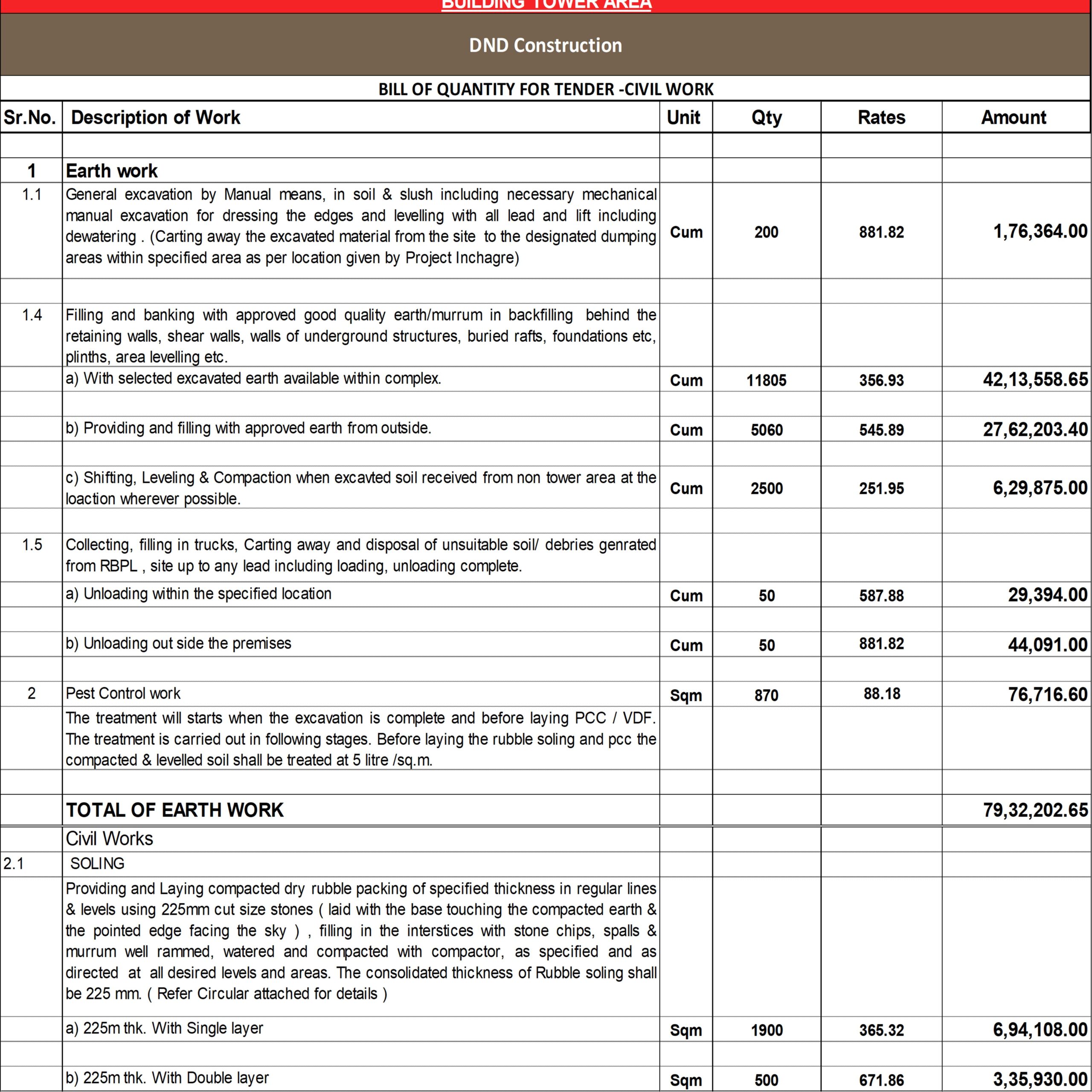What is Bill of Quantities (BOQ)?
A Bill of Quantities (BOQ) is a detailed document used in construction projects to itemize all the materials, labor, and resources required for the project. It provides an accurate breakdown of the costs, allowing contractors to prepare bids and helping project managers control costs.
The Bill of Quantities (BOQ) is a vital tool in construction projects for estimation and costing. It ensures that all parties have a clear understanding of the costs involved, helps contractors prepare accurate bids, and allows clients to control project costs effectively. A well-prepared BOQ can prevent cost overruns and ensure that the project stays within budget.

Key Components of BOQ
- Description of Works
- Quantities
- Unit of Measurement
- Rate
- Amount
- Total Cost
Purpose of BOQ
- Cost Estimation:
- Tendering and Bidding
- Cost Control
- Variation Management
Sections of a Typical BOQ
1. Preliminaries
General expenses, like site setup, temporary facilities, supervision, safety measures, and insurance, are not directly related to construction but are necessary for the project.
2. Civil Works
Excavation and Earthwork: Digging, filling, and leveling the site.
• Concrete Works: Details of concrete mix, quantities, and formwork.
• Masonry: Types and quantities of brickwork or stonework.
• Plastering: Details of plaster for walls and ceilings.
3. Structural Works:
Reinforcement quantities (for columns, beams, slabs) and other structural elements.
4. Finishes
Flooring: Types of materials (e.g., tiles, marble) and their quantities.
Painting and Polishing: Surface finishes for walls, ceilings, and woodwork.
5. Services
Plumbing and Sanitation: Pipework, fixtures, and installations.
Electrical: Wiring, lighting fixtures, and other electrical installations.
6. External Works
Landscaping, external paving, boundary walls, and drainage systems.
